It seems that only when we finally stood on the African continent did our overland journey begin. We took the ferry from Algeciras in Spain to Ceuta (a Spanish enclave in Africa) a 35 minute trip across the Mediterranean Sea. We watched Europe disappear over the Northern horizon as Africa appeared on the southern horizon. We went through customs with absolutely no problems or hassles, the Moroccan officials were helpful and friendly.
We headed for Chefchaouen, a little town where we planned to spend our first night in Morocco.
Enlarge

Adventurouspirits
The next morning we headed into Chefchaouen town and wandered through the medina, everything was quiet and many stores closed because it is Ramadan. We did not linger too long as we had to head to Fez.
Enlarge

Adventurouspirits
We planned to drive the notorious route via Ketama, known as the “wild frontier of Morocco” as the area is one of the world’s largest suppliers of hashish. The drive itself was beautiful crossing the Rif Mountains, with plunging cliffs, forests and little villages. We were told we would be hassled to buy hashish. They were relentless, we were chased by men on motorbikes, cutting in front of us, tailing us; we were chased by men in cars, every corner we were waved down to stop. It became quite nerve wracking on the mountainous roads and we were pleased when finally after several hours the road straightened and Fes was now in reach. We had the GPS coordinates of the campsite in Fes but heading into a new city can be challenging without an actual map. However as we entered Fes a man on a motorbike waved us down, and asked us where we were going. He told us to follow him and we did weaving our way through the traffic to the other side of the city and the campsite.We met some wonderful British travellers at the campsite in Fes who invited us to join them on a tour they had arranged the following day.
Enlarge

Adventurouspirits
Sometimes it worth hiring a guide and this was one of them. Our first stop was the Royal Palace, or the Dar el-Makhzen. Very grand and impressive entrance, the interior unfortunately is not open to the public.
Enlarge
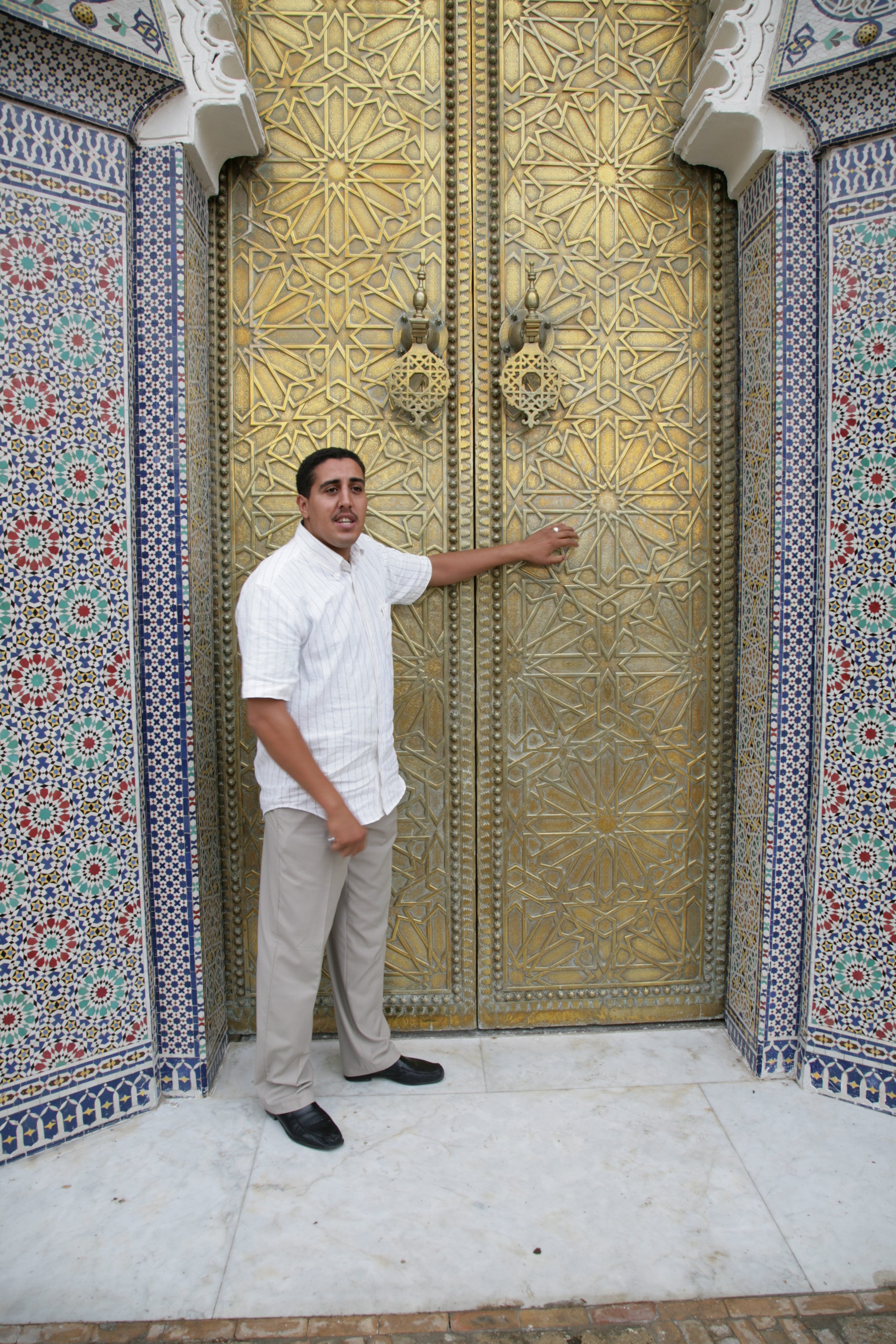
Adventurouspirits
Fes el Bali is the oldest of Morocco’s imperial cities and has been declared a World Heritage Site by UNESCO. The Medina is a maze of narrow passageways, crowded by people, donkeys carrying supplies, shoppers and shopkeepers.
Enlarge

Adventurouspirits
We weaved our way through the passages, following our guide at times struggling to keep up and make our way through the throngs of people. Making it extra tough on my thighs was the fact that all passageways are on a slope so that the water drains, so it is uphill, then downhill then side hill, nowhere is it flat. Can’t complain it is good exercise to compensate for the long hours of driving.
Enlarge

Adventurouspirits
Donkeys have the right of way, and the owners yell, “Balaka” to warn people to get out of the way of the donkey.
Enlarge

Adventurouspirits
Enlarge
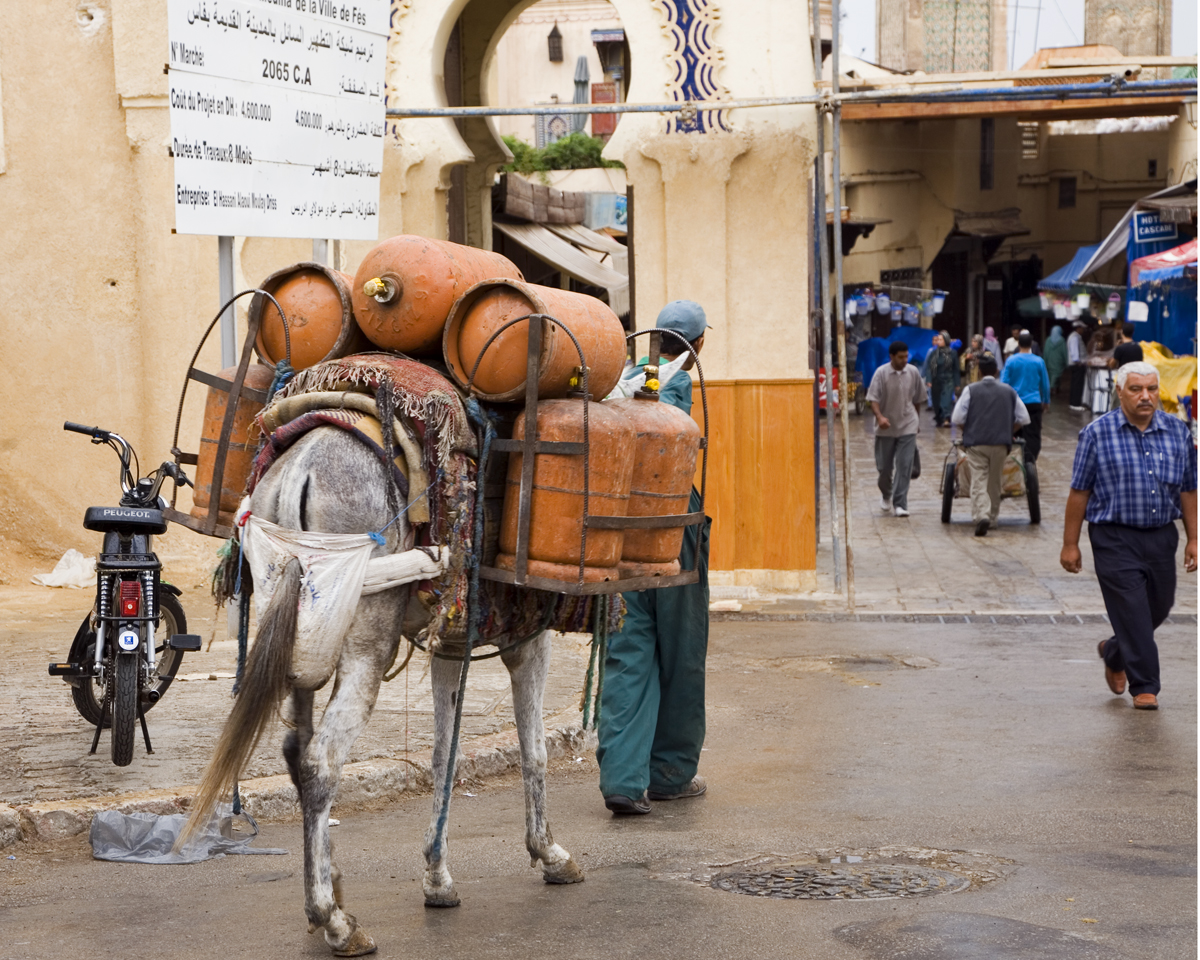
Adventurouspirits
Children cry, men hustle us to buy, and the sounds of prayer drift from the many mosques. The shopkeeper selling Berber carpets tried to entice us to buy, with offers of mint tea, the spice shopkeeper tempted us with the delightful aromas of all his spices, the metal worker demonstrated his skills, the weaver wrapped a scarf around my head and tried to convince me I needed it to protect me from the sun and the nougat man got his sale.
Enlarge

Adventurouspirits
Enlarge

Adventurouspirits
Enlarge

Adventurouspirits
Enlarge

Adventurouspirits
Enlarge

Adventurouspirits
We visited the Bou Inania Medersa, a madrasa founded in AD 1351–56. It is magnificent and if you see only one thing in Fes it has to be this.
Enlarge
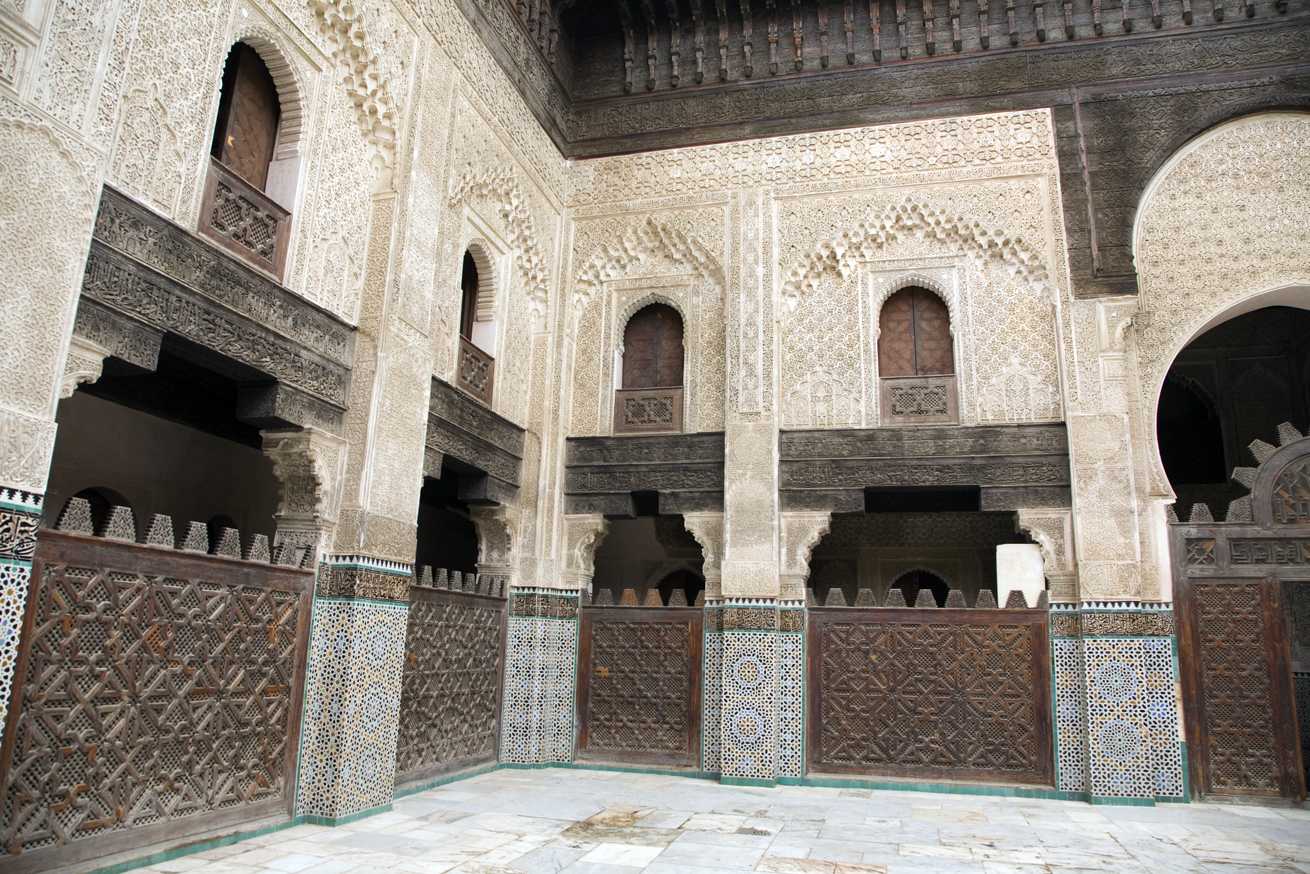
Adventurouspirits
Enlarge

Adventurouspirits
We visited the tanneries and watched in amazement at the men working in the large vats of dye. It was a fascinating day.
Enlarge

Adventurouspirits
Enlarge

Adventurouspirits
Enlarge
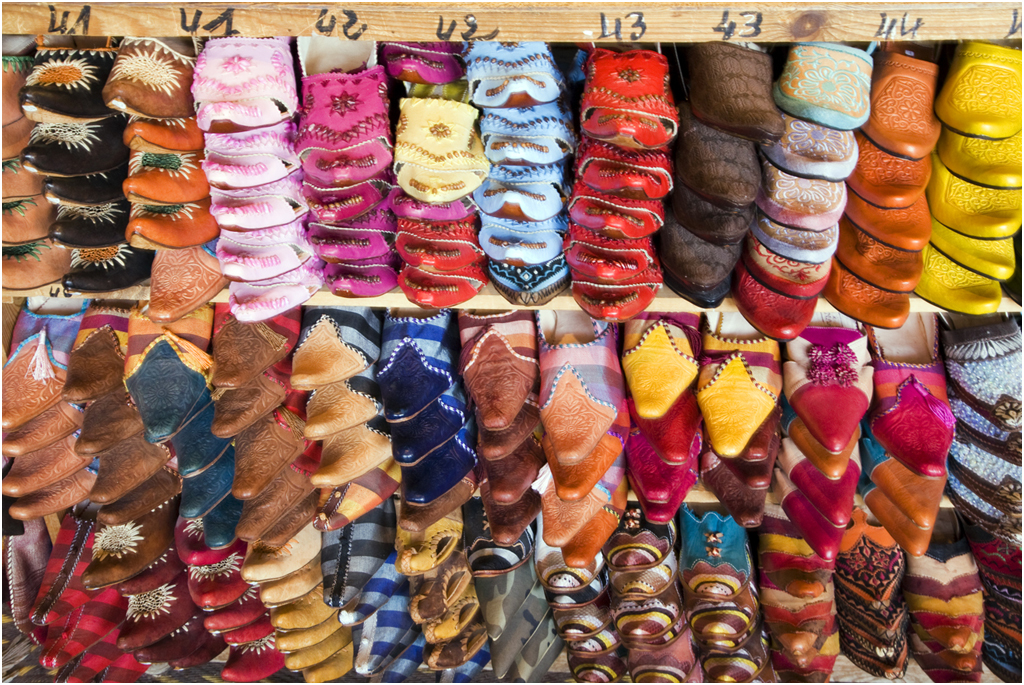
Adventurouspirits
As we made supper that evening we watched as the most intense and largest lightening storm either of us had ever witnessed approached us. It was time to pack everything into the Cruiser and not minutes later it began to rain, it was if the heavens had just opened above us, the rain was hard and heavy. The Moroccan pre Sahara begins as soon as one crosses the Atlas Mountains. Our drive from Fes south through the Atlas mountains was supposed to be beautiful, with wonderful gorges and a waste land of rock and scrub. The area is also reported to have over 300 cloudless days a year. The storm in Fes decided to hitch a ride with us and followed us the entire day, over 350km, washing out parts of roads, causing huge rock and gravel slides across the road, at times the water was as deep as 2 feet on the road, cars stalled and at times we had to stop as visibility was so poor. Our window screen wipers could not go fast enough, and Tom just muttered that he never thought he would need his snorkel crossing into Sahara. The campsite we were heading for had been flooded out, are we having fun yet? We just never know what the day will hold for us, but to be flooded out in Morocco we had not anticipated this one. Oh well such is life.
Enlarge

Adventurouspirits
The rains. bring life.
Enlarge

Adventurouspirits
On the road to Zagora from Erg Chebbi, the police waved us down and the road was closed. But after looking at our cruiser they said we could make it if we went slowly. It wasn’t long before we knew the reason for the road closure; a bridge was completely flooded with raging high waters swirling across it. Parked vehicles and trucks on either side, people camped out watching and waiting for the water to subside. Tom and I looked and wondered if we could really make it and I had visions of us being washed down the raging river. “We can do it” Tom announced getting back into the car. I was nervous and held my breath as we drove through the water, which was splashing up as high as my window.
Enlarge

Adventurouspirits
The sign at the end of the street in Zagora indicated that it was 52 days by camel from here to Timbuktu if the borders were open. This was the ancient camel trading route. We would consider visiting Timbuktu when we driving through Mali.
Enlarge
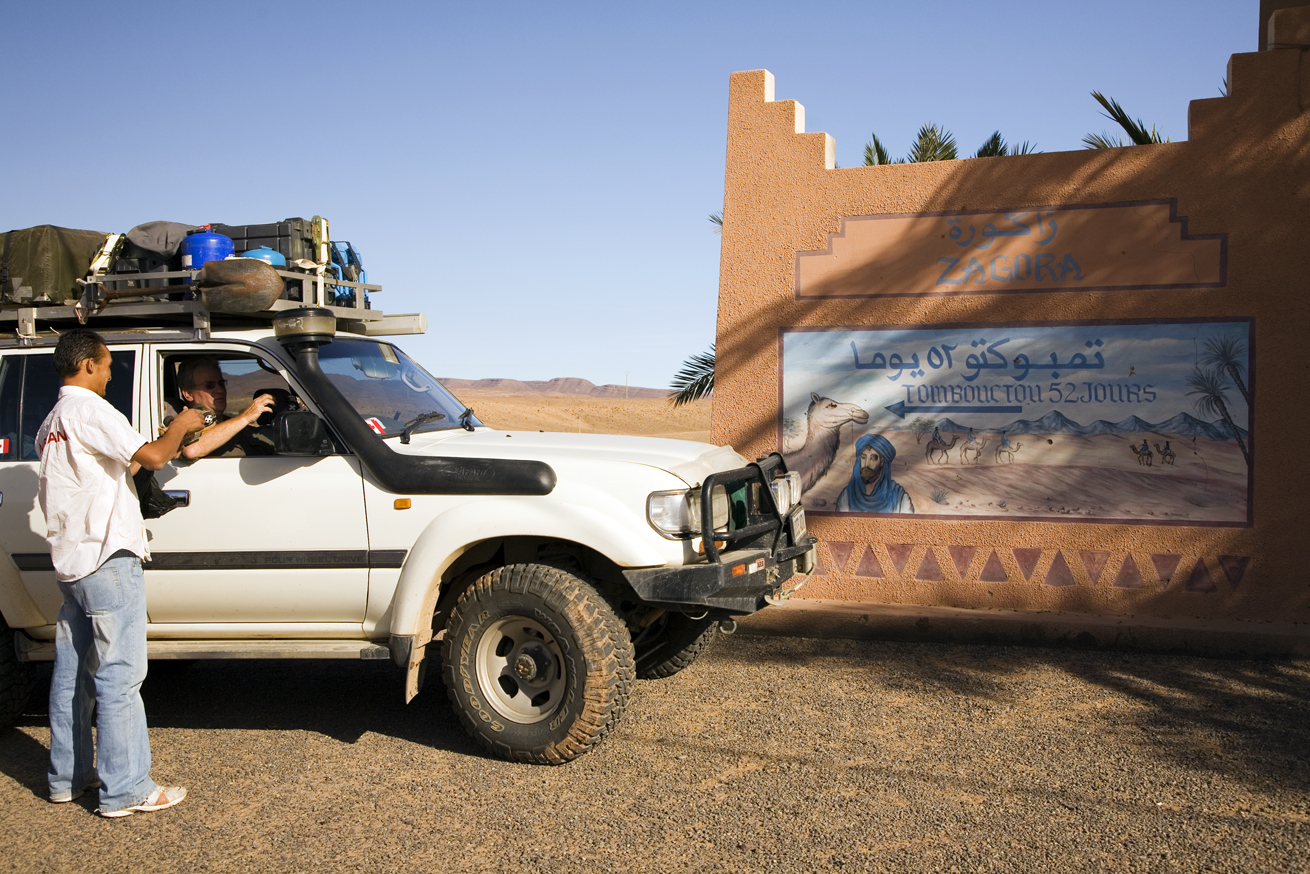
Adventurouspirits
We drove down the Draa Valley to Zagora a beautiful valley set as an oasis among the surrounding mountains. Famous for its dates we could not resist purchasing some at a roadside stall, and the dates seemed too melt in our mouths, absolutely delicious and nothing like the dates one purchases in Canada.
Enlarge
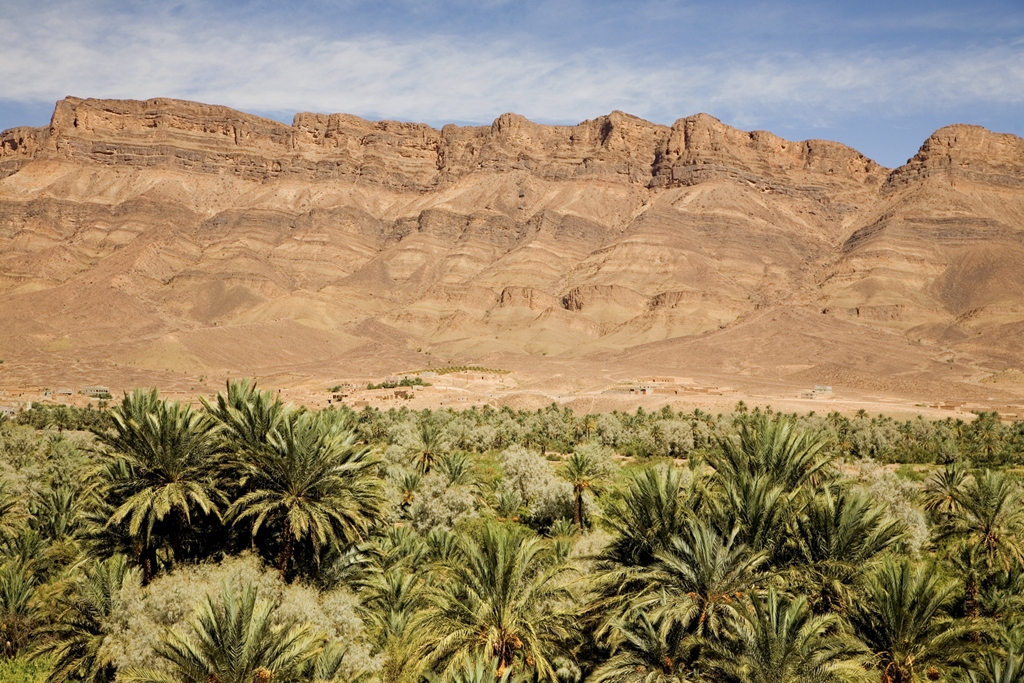
Adventurouspirits
Located in the foothills on the southern slopes of the High Atlas in the Province of Ouarzazate, the site of Ait-Ben-Haddou is the most famous ksar in the Ounila Valley. The Ksar of Aït-Ben-Haddou is a striking example of southern Moroccan architecture.
Enlarge
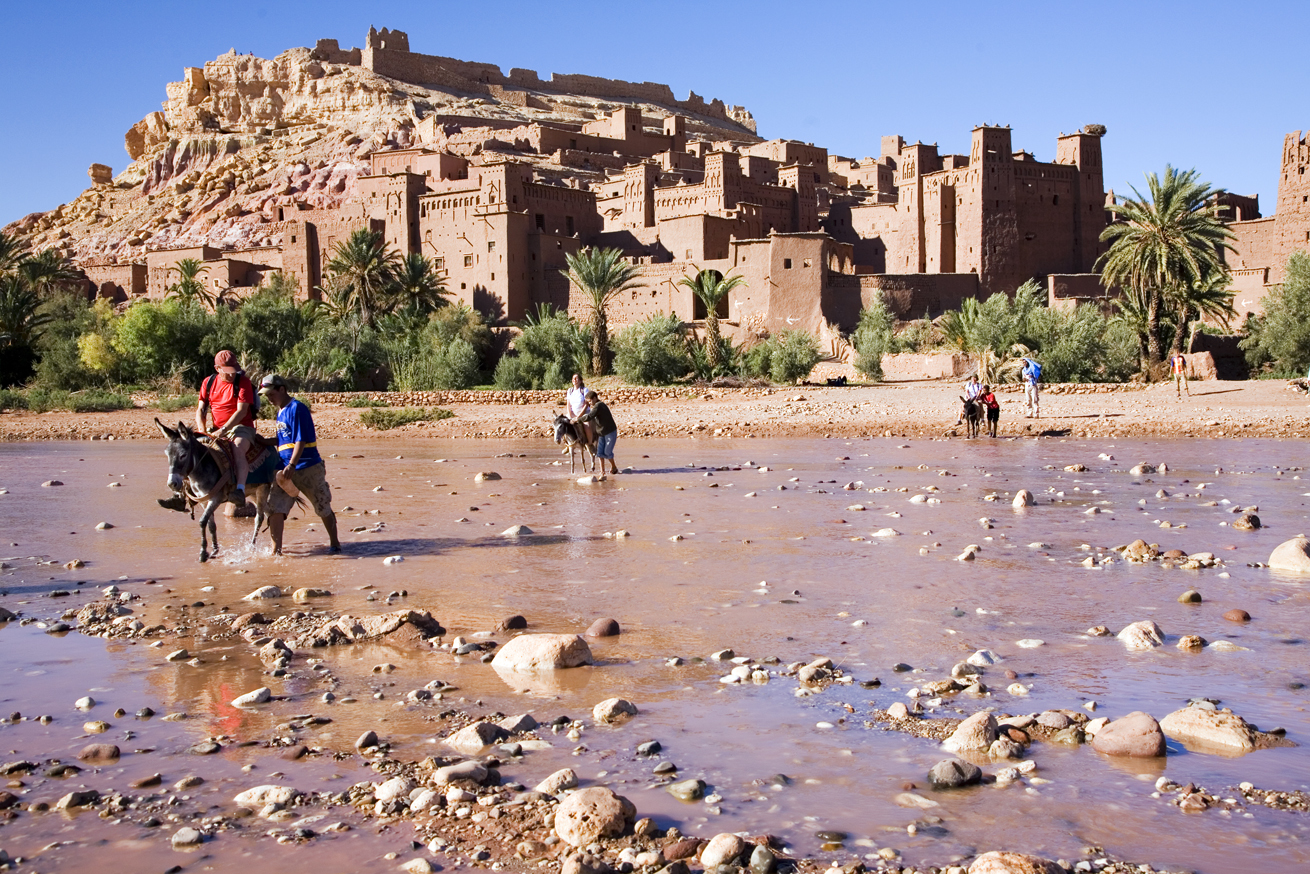
Adventurouspirits
We spent a night in the village of Ouarzatze where a local merchant managed to coax me into his shop by telling me a story that he had a cousin in Vancouver and he wanted help to write him a thank you letter. I fell for it. I didn’t buy anything however.
Enlarge

Adventurouspirits
We did enjoy an excellent meal of Tagine, the Moroccan national dish. Meat, chicken or fish slow cooked in a clay pot with vegies, fruit and spices.
Enlarge

Adventurouspirits
Next stop Marrakesch where we did not intend to stay for more than a day or so. Our entry into the city was difficult, since the police are relentless, stopping us for anything and everything. Arriving in Marrakech with Tom navigating, I struggled to make my way through the traffic. The light was flashing green and I slowly attempted to make my way through an intersection. But I did not make it and suddenly I was surrounded by honking cars going the other way. As soon as I was through I was pulled over by the police for an “infraction” he demanded $200.00, but Tom was not paying so the police reduced the fine to $100.00 still too much for Tom, “no paye, je aller tribunal” (I not pay, I go to court). Shaking his head he took down all my details and waved us on. I wondered if I would be able to leave Morocco without paying for my “infraction”.
Enlarge

Adventurouspirits
We arrived at the Atlantic coast at a pretty little village of Essaouira. It was here that we would start our long drive south down the coast line. We celebrated by having a glass of fresh orange juice, for which the area is famous, and wondered through the little medina and souk admiring the carpets, spices and other goods for sale.
Enlarge

Adventurouspirits
Enlarge
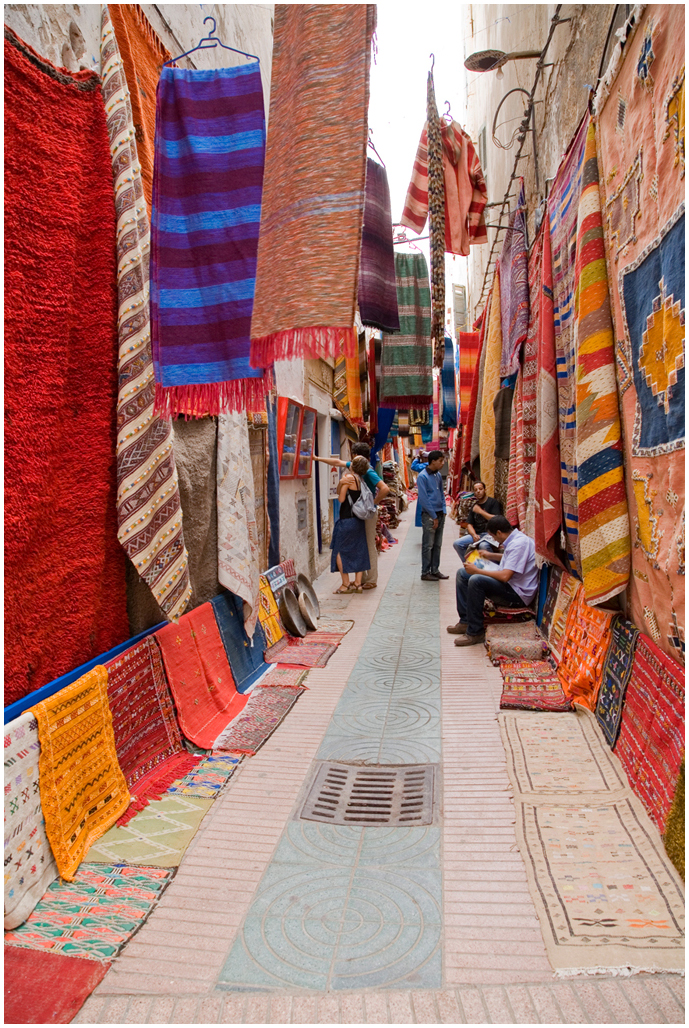
Adventurouspirits
The area around Essaouira are famous for their valuable Argan Trees. The fruit of these trees produce an oil which is sold all around the world for cooking and cosmetics. They are so valuable that the trees are protected by the King himself. The goats enjoy the trees as well and they are quite a sight as they scramble amongst the thorny branches.
Enlarge

Adventurouspirits
The beaches around Essaouira are spectacular and empty.
Enlarge

Adventurouspirits
A tasty evening meal. Morocco cuisine is very inventive and aromatic.
Enlarge

Adventurouspirits
Finally we entered the Western Sahara, Western Sahara was originally Spanish territory. Morocco occupied it in 1979 and have claimed it as a part of Morocco since then. It is viewed by most of the world as disputed territory and is currently experiencing a civil uprising by the armed wing of the local Sawahari population, known as the Polisario. The area is largely uninhabited and is under heavy military control.
Enlarge
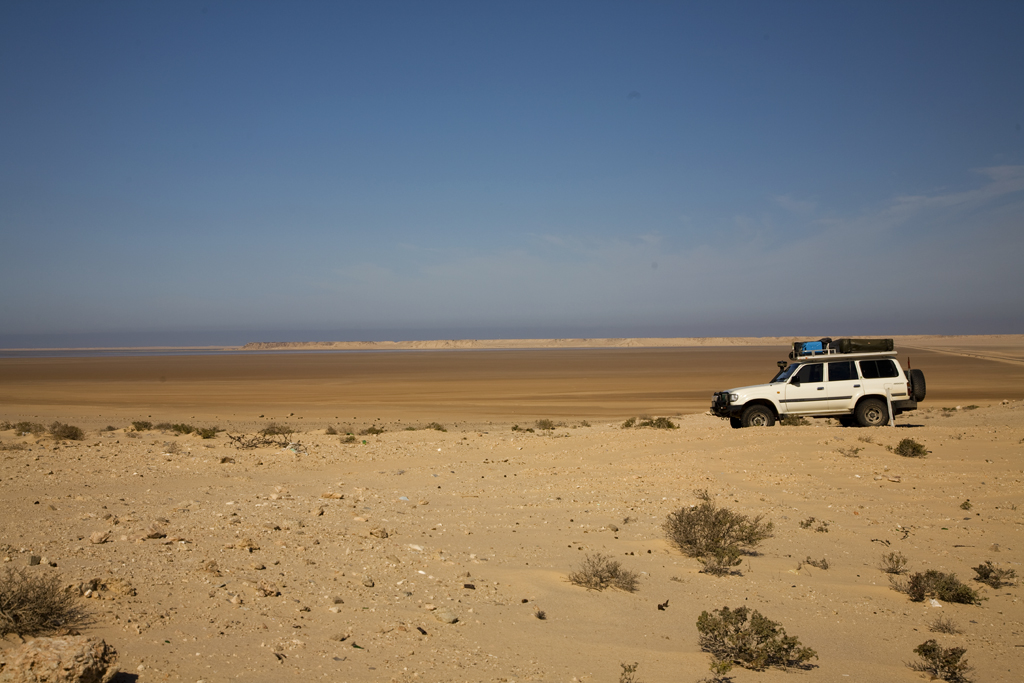
Adventurouspirits
We were constantly stopped by military police who wanted all our details, including passport information, vehicle information, professional information and family information and why we were in the area. We had entered the Western Sahara knowing this would happen so we had printed off 20 copies of all the information and by day 3 we had no more copies of the “fiche”. I had to resort to writing out all the information by hand.
Enlarge

Adventurouspirits
The Campsite at Laayoune was closed so we were directed to an oasis a few miles outside the town It was also closed however the kind owner instructed the guard to let us in and spend the night. We watched in delight as Mohammed and his friend furnished the interior of the Bedouin tent with wonderful carpets, cushions and tables. It was fit for a king and Queen and as the sun set we were served bread, honey and sweet tea. We slept peacefully under a million stars. It was magical.
Enlarge
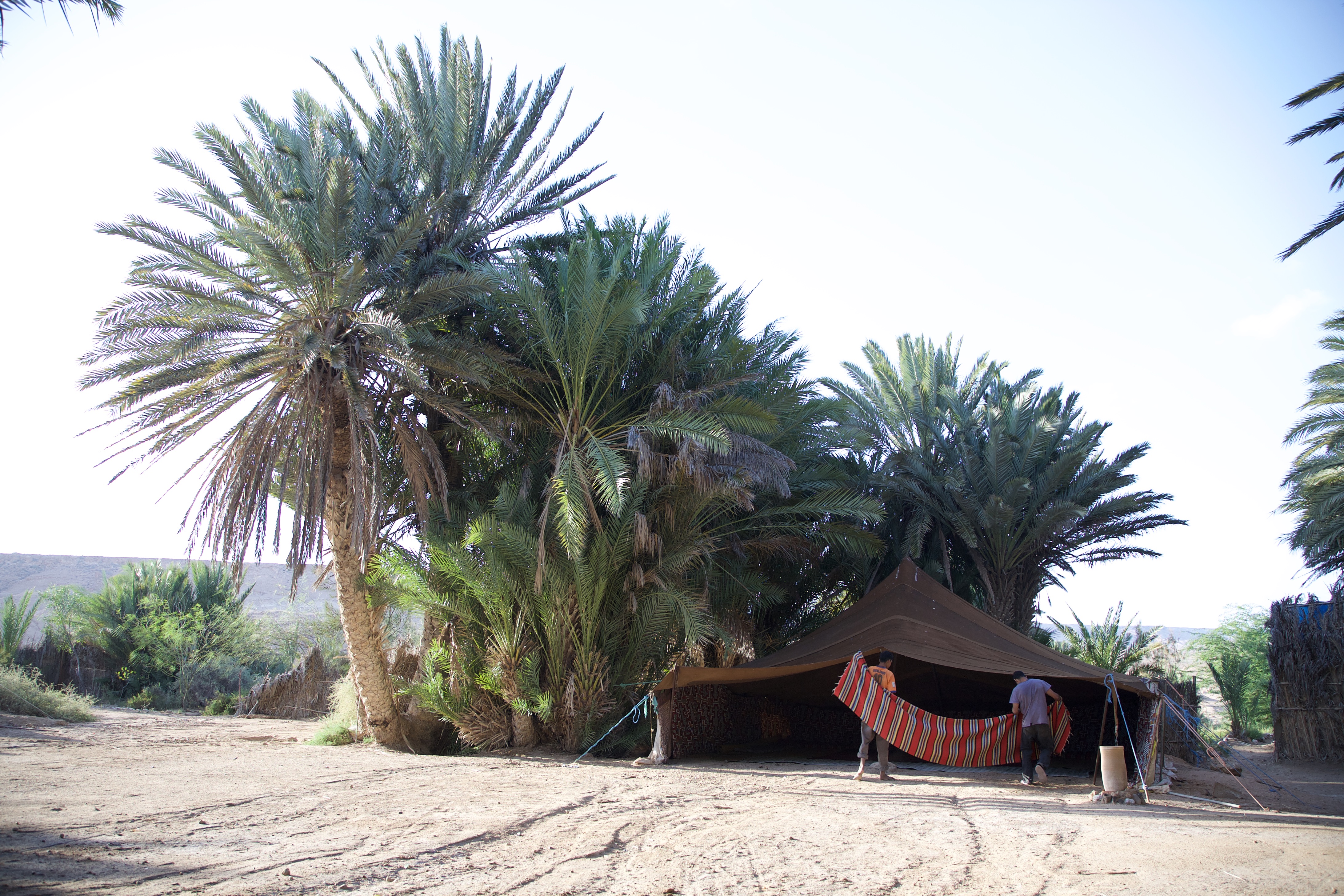
Adventurouspirits
Enlarge

Adventurouspirits
Enlarge

Adventurouspirits
Enlarge
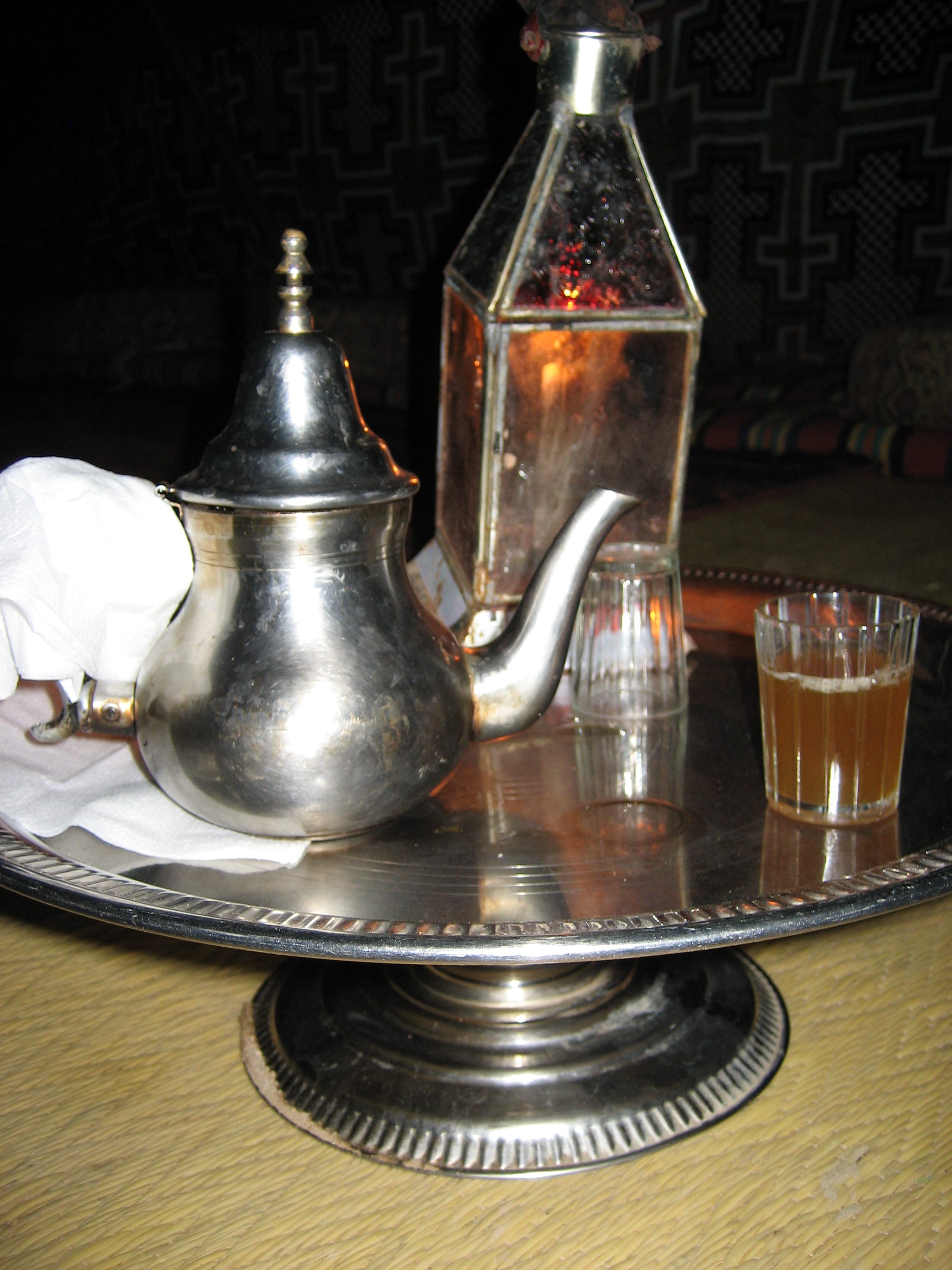
Adventurouspirits
Enlarge

Adventurouspirits
Enlarge

Adventurouspirits
We were up really early so as to avoid the traffic of Laayoune, but as we entered the city we discovered roads closed, and hundreds of thousands men, women and children walking towards the mosque. It was the first day after Ramadan. A sea of people, women beautiful dressed, men in their flowing garb and the sounds of prayer filled the air as everyone was called to pray. It was an amazing sight, and we were really sorry we could not photograph or video graph the scene. After an hour and several attempts of trying to detour around the mosque we were finally heading out of town.
The road to the Mauritania was long and remote. We turned down a dusty riverbed to seek a campsite fro the night and discovered a stunning hotel that appeared like a mirage. We talked them into letting us camp in the grounds.
Enlarge
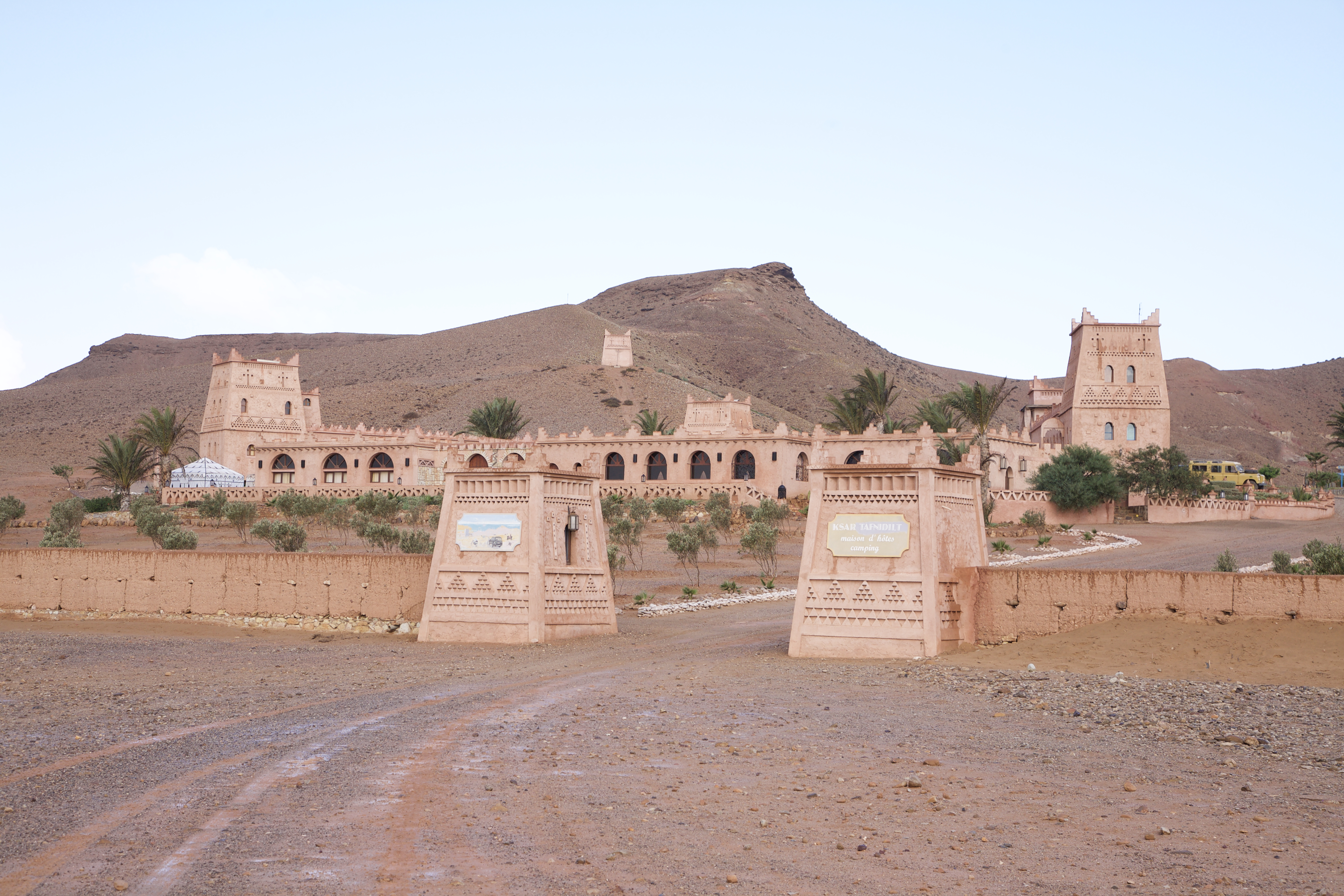
Adventurouspirits
Enlarge
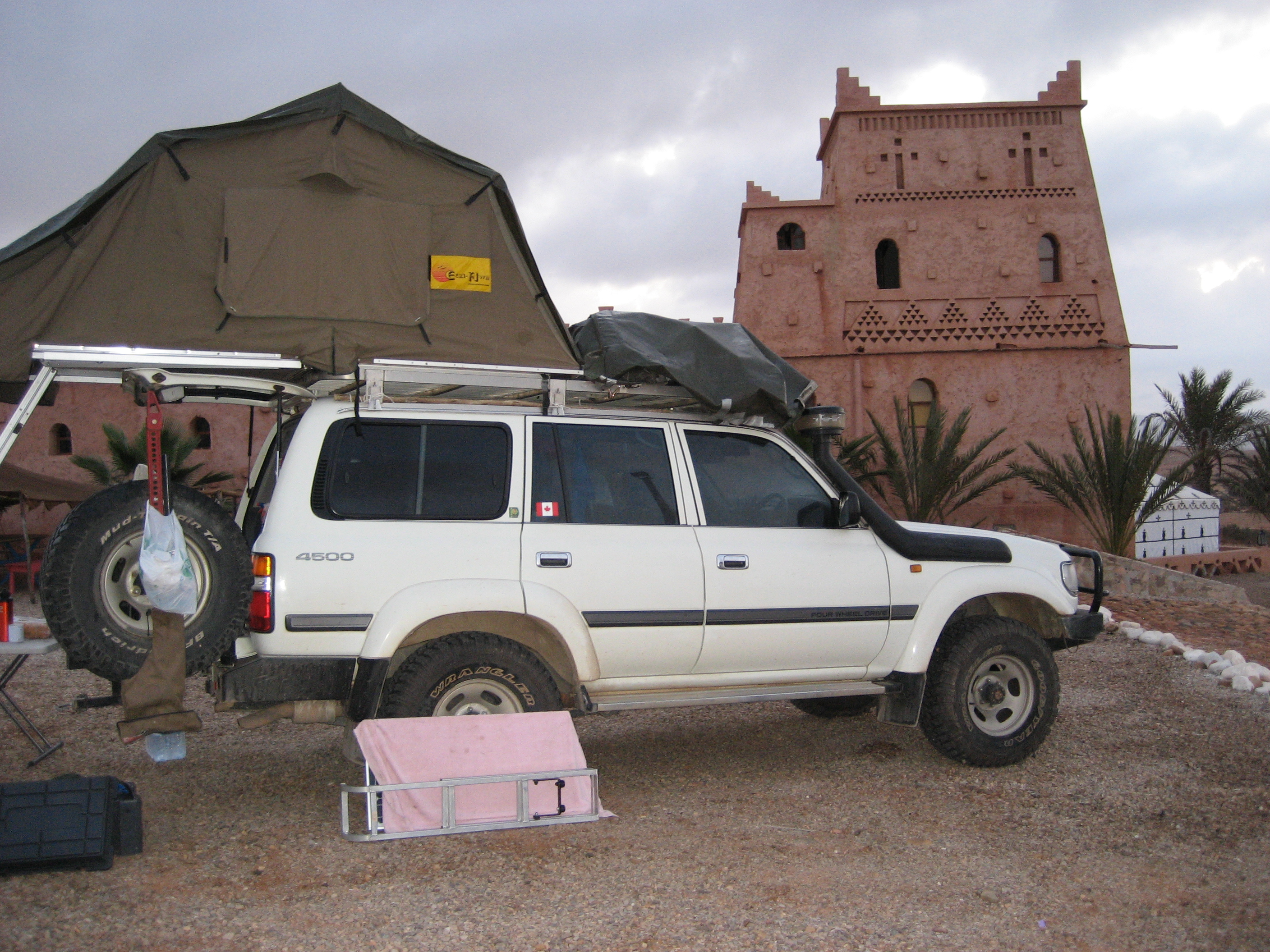
Adventurouspirits
We spent our last night in Morocco at a grubby little motel at the border. Tom finished his whisky as Mauritania allows no liquor and it is illegal to bring it in. It was hot, airless, and noisy and the beds we were to discover full of bed bugs. They took a real liking to me and my souvenir from Morocco, were lots and lots of bugs bites. I look like I have a bad case of chickenpox.
Enlarge

Adventurouspirits
Tomorrow we cross into Mauritania
